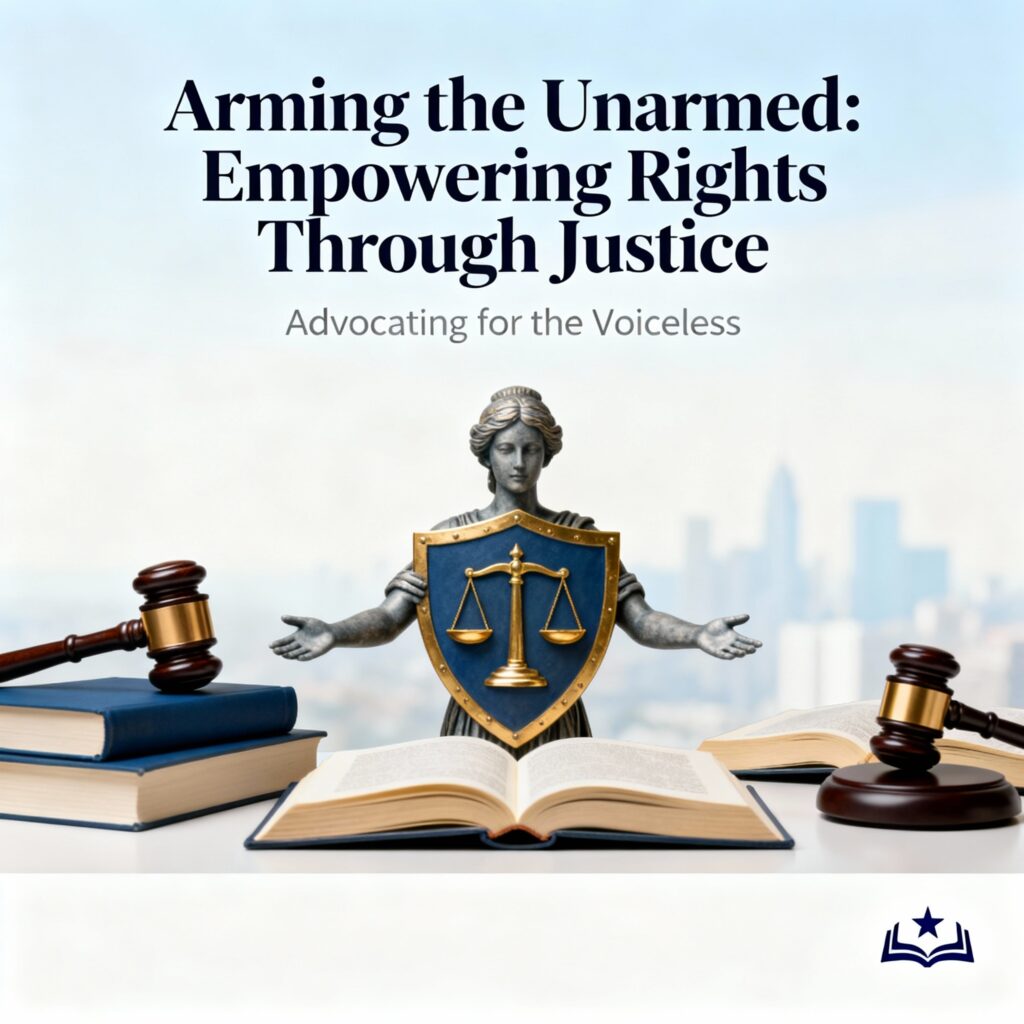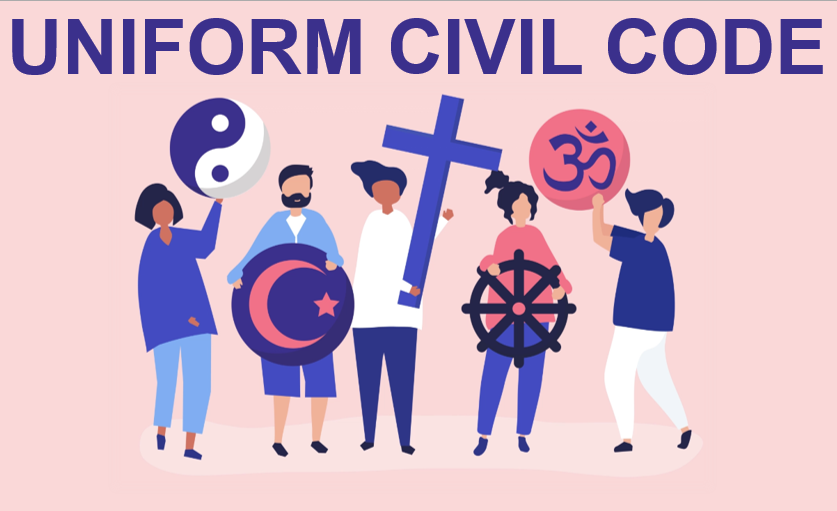Published On: October 4th 2025
Authored By: Sankha Brata Mitra
St. Xavier's University, Kolkata
Abstract
With an emphasis on both legislative modifications and judicial developments through 2023, this article examines the development of India’s abortion legislation in the wake of the Medical Termination of Pregnancy (Amendment) Act, 2021. It examines the extension of gestational limits, the inclusion of single women in the range of acceptable terminations, and the shift towards broader definitions of “woman” that include people of all genders. However, it also emphasises how restrictive interpretations still exist in some situations, particularly when it comes to late-term abortions performed for mental health reasons. The ongoing effects of overlapping criminal laws and ancillary laws, such as the Protection of Children from Sexual Offences Act, the Indian Penal Code, and the Pre-Conception and Pre-Natal Diagnostic Techniques Act, which impose psychological and procedural obstacles on patients and providers, are also covered in the conversation. The paper, which takes a mixed academic and advocacy stance, makes the case for a shift to a rights-based, autonomy-affirming legal system that eliminates punitive limitations and guarantees all pregnant Indians safe, affordable access to abortion services.
Keywords: Gestational Limits, Ancillary Laws, Pre-Conception, Pre-Natal Diagnostic Techniques Act.
Introduction
India’s abortion law is rooted in the Medical Termination of Pregnancy (MTP) Act, 1971, which legalized abortion as an exception to the Indian Penal Code (IPC)1. Under the 1971 Act, termination was permitted by a registered medical practitioner on narrow grounds only up to 20 weeks’ gestation. The law’s 20-week cutoff was widely criticized as arbitrary and medically outdated. After decades of advocacy, Parliament enacted modest reforms2. In addition to relaxing infrastructure standards and establishing district-level certification committees to approve abortion facilities, the MTP (Amendment) Act of 2002 also permitted registered practitioners to prescribe combined medical-abortion medications for up to seven weeks. Significant changes were made to the MTP Act in 2021, including the extension of the maximum gestational limit for certain categories of women from 20 to 24 weeks and the important replacement of the terms “married woman” and “husband” with “any woman” and “partner.”3 The Amendment authorized abortion up to 20 weeks on the opinion of one doctor, and 20–24 weeks with two doctors’ concurrence for defined “extraordinary” cases. Rule 3B of the MTP Rules, 2003 (as amended 2021) now lists such categories: survivors of rape or sexual assault; minors; women undergoing a change of marital status. Cases of fetal malformation incompatible with life; and women in humanitarian crises or disasters.4 These changes were hailed as a step toward inclusivity, but critics noted the law “falls short of undoing certain key barriers” to abortion access.5
Rule 3B and Access for Unmarried Women
Rule 3B6 of the MTP Rules (2021) was designed to operationalize the 2021 Amendment’s expansions. Importantly, it now explicitly includes unmarried women under two clauses. First, the ground of “failure of contraception”, previously limited to a “married woman or her husband” – was extended in 2021 to “any woman” regardless of marital status7. Thus, an
unmarried woman who becomes pregnant due to contraceptive failure can seek a first-trimester abortion like any married woman. Second, Rule 3B(1)(c)8 now covers women who have suffered a “change in marital status” during pregnancy. The Supreme Court in X (HFWD)9 confirmed that this language includes an unmarried woman abandoned by her partner10. In practice, such interpretations ensure that the Amendments’ promise of gender neutrality has concrete effect. Notably, the Delhi High Court had earlier held that Rule 3B categorizes “survivors of sexual assault or rape” as married women unless interpreted inclusively; the Supreme Court rejected this narrow view.11
These rule changes have real impacts. Under the old law, unmarried women often faced outright denial of abortion or were forced to approach high courts for permission if beyond 20 weeks. Today, the law as per the Supreme Court affords them an equal claim to reproductive autonomy in most cases, as X (HFWD)12 emphasizes.13 Critics argue Rule 3B’s approach is still categorical – only a fixed list of situations – rather than a true rights-based standard. For example, the regime only explicitly covers survivors of rape (who are typically minors under law) and contraceptive failure, but not all cases of sexual violence outside marriage or any sexual health emergency. Indeed, married rape is still not recognized Nonetheless, Rule 3B and the SC’s purposive reading have significantly loosened the previous marital restrictions on abortion.
Landmark Judicial Decisions
The Supreme Court has played an active role in interpreting the amended law, especially for late-term and vulnerable cases. In X v. Health & Family Welfare Dept. (2022)14, a three-judge bench led by Justice D.Y. Chandrachud held that unmarried women have the same right to abortion as married women. The Court noted that Parliament’s replacement of “married woman” with “any woman” in 2021 signaled intent not to exclude unmarried women. Rule 3B(c) (“change of marital status during pregnancy”) was given a broad, purposive interpretation: it now covers an unmarried woman abandoned by her partner. The Court emphasized women’s reproductive autonomy and the right to bodily and decisional freedom. It observed that denying an unmarried or single woman an abortion while allowing it for married women would violate equality and dignity, and that the law should not enforce “patriarchal” notions of “permissible sex” 15. In effect, X v. HFWD16 liberalized access under Rule 3B by stressing that the MTP Act must be read in light of contemporary social realities17 The Court also expanded the notion of “woman” to include transgender and gender-diverse persons, stating it would “use the term ‘woman’ in this judgment as including persons other than cis-gender women who may require access to safe medical termination of their pregnancies”. This inclusive language, though not mandated by the statute, reflects a judicial willingness to incorporate trans rights under the abortion law18.
By contrast, in X v. Union of India (2023)19 the Court took a more conservative turn. The petitioner was a young woman seeking termination of a 26‑week pregnancy; she suffered postpartum depression and suicidal ideation after a prior delivery. Medical reports from AIIMS confirmed severe mental health risk but found no fetal abnormality. The Supreme Court (CJI Chandrachud dissenting) ultimately denied the abortion plea. The majority held that at 26 weeks the fetus was viable, and it was “averse to issue a direction” to stop the fetal heartbeat as required by any abortion at that stage20. The Court interpreted “life” in Section 5 of the MTP Act narrowly, while it need not be limited to mere physical life, it still required an imminent threat to the woman’s life, broader notions of “meaningful life” or mental distress were not sufficient. In other words, the justices refused to extend the Act’s scope on the basis of a pregnant woman’s mental hardship alone. They directed the pregnancy to be carried to term (with an option for adoption). This ruling highlights a gap between progressive ideals and judicial reality: even as the Court championed autonomy in X (HFWD)21, it balked at a late- term abortion for mental health reasons in the said case. (Writ petitions following these cases have continued to test the boundaries.22
Overlapping Laws
Even as the MTP Act provides a limited legal path for abortion, other laws continue to criminalize or complicate abortion. Chapter XVI of the IPC still punishes causing miscarriage (Sections 312–318) except as exempted by MTP. In practice, providers and women often fear being prosecuted under these penal provisions. Studies note that the MTP Act was intended as a narrow exception to IPC criminal sanctions, not as a rights-guarantee. Several courts have interpreted IPC sections broadly: for instance, practitioners have been charged under Section 31223 for performing legal abortions. The result is a pervasive “chilling effect”: many healthcare professionals hesitate to offer abortion services, especially late-term, due to fear of arrest and trial. Section 31224 has been called a dragnet: even if it were repealed, other IPC offences (312– 318) would still allow prosecution of patients and providers.
Moreover, the Protection of Children from Sexual Offences (POCSO) Act, 2012 and the Pre- Conception and Pre-Natal Diagnostic Techniques (PCPNDT) Act, 1994 further constrain abortion access. POCSO’s mandatory reporting of any minor pregnancy means that any healthcare provider who learns of sexual activity involving a person under 18 must notify police25. In practice, this has created a deterrent: doctors fear that treating a minor will trigger criminal cases (even when the minor may have been the survivor of abuse), so adolescents are often denied care or pushed toward unsafe alternatives27. Similarly, PCPNDT (enacted to prevent sex-selective abortion) imposes strict record-keeping and ultrasounds, but its enforcement can ensnare ordinary abortions if, for example, a clinic is suspected of violating sex disclosure rules.27
Conclusion
while India’s abortion law has undergone notable liberalization on paper such as the inclusion of unmarried women within its ambit, the extension of permissible termination to 24 weeks in specific emergencies, and broader, more progressive judicial interpretations—substantive challenges persist. Empirical research further reveals that, despite legal reforms, a significant proportion of women remain dependent on informal or unsafe abortion channels. To bridge this gap between law and lived reality, there is an urgent need for a rights-centered legal framework, one that dismantles punitive barriers and unequivocally upholds the reproductive autonomy of all pregnant persons.
REFERENCES:
- Ahmad T, ‘Unmarried Persons/Women Cannot Be Denied Right to Abortion Based on Patriarchal Principles About “Permissible Sex”: Supreme Court’ (SCC Times, 29 September 2022) https://www.scconline.com/blog/post/2022/09/29/unmarried-persons- women-cannot-be-denied-right-abortion-based-on-patriarchal-principles-about-permissible-sex-supreme-court-chundrachud-legal-research-updates-news/ accessed 10 August 2025.
- Bhardwaj P, ‘Unmarried Persons Cannot Be Denied Rights Based on Narrow Patriarchal Principles on “Permissible Sex”: Key Takeaways from SC’s Historic Verdict on Right to Safe Abortion’ (SCC Times, 29 September 2022) https://www.scconline.com/blog/post/2022/09/29/unmarried-persons-women-cannot-be- denied-right-abortion-based-on-patriarchal-principles-about-permissible-sex-supreme- court-chundrachud-legal-research-updates-news/ accessed 10 August 2025.
- Centre for Reproductive Rights, ‘Factsheet: India MTP Amendment Act (2021)’ (September 2022) https://reproductiverights.org/wp-content/uploads/2022/09/India-FACTSHEET-MTP-Amendment-Act-9-22.pdf accessed 10 August 2025.
- Jain D, ‘Beyond Bars, Coercion and Death: Rethinking Abortion Rights and Justice in India’ (2024) 14(1) Oñati Socio-Legal Series 99 https://doi.org/10.35295/osls.iisl.1680 accessed 10 August 2025.
- Kashyap G, ‘“Averse” to Stilling Heart of a Viable Foetus: Supreme Court Rejects Plea for Termination of 26-Week Pregnancy’ (Supreme Court Observer, 16 October 2023) https://www.scobserver.in/journal/averse-to-stilling-heart-of-a-viable-foetus-supreme- court-rejects-plea-for-termination-of-26-week-pregnancy/ accessed 10 August 2025.
- Pandey S, ‘A Case for Transgender Abortion Rights in India’ (JURIST, 15 February 2024) https://www.jurist.org/features/2024/02/15/a-case-for-transgender-abortion-rights-in- india/ accessed 10 August 2025.
- Rai S and Sheikh S, ‘Why Women’s Mental Health Must Be a Key Consideration in Abortion Pleas’ (The Wire, date unknown) https://thewire.in/law/how-some-supreme- court-judgements-undermine-the-legitimacy-of-indian-abortion-laws accessed 10 August
[1] Centre for Reproductive Rights, ‘Factsheet: India MTP Amendment Act (2021)’ (September 2022) (PDF) https://reproductiverights.org/wp-content/uploads/2022/09/India-FACTSHEET-MTPAmendment-Act-9-22.pdf accessed 10 August 2025.
[2] Supra 1.
[3] Dipika Jain, ‘Beyond Bars, Coercion and Death: Rethinking Abortion Rights and Justice in India’ (2024) 14(1) Oñati Socio-Legal Series 99 https://doi.org/10.35295/osls.iisl.1680 accessed 10 August 2025.
[4] Medical Termination of Pregnancy Act, 1971 (as amended by the Medical Termination of Pregnancy (Amendment)Act,2021),GovernmentofIndia(PDF) accessed 10 August 2025.
[5] Supra 3.
[6] Medical Termination of Pregnancy Rules, 2003, r 3B (as amended by the Medical Termination of Pregnancy (Amendment) Rules, 2021).
[7] Supra 4.
[8] Medical Termination of Pregnancy Rules, 2003, r 3B(1)(c) (as amended by the Medical Termination of Pregnancy (Amendment) Rules, 2021).
[9] X v. The Principal Secretary, Health and Family Welfare Department, Government of NCT of Delhi & Anr [2022] (Civil Appeal No 5802 of 2022, SLP (C) No 12612 of 2022).
[10] Tariq Ahmad, ‘Unmarried Persons/Women Cannot Be Denied Right to Abortion Based on Patriarchal Principles About “Permissible Sex”: Supreme Court’ (SCC Times, 29 September 2022) https://www.scconline.com/blog/post/2022/09/29/unmarried-persons-women-cannot-be-denied-right-abortion-based-on-patriarchal-principles-about-permissible-sex-supreme-court-chundrachud-legal-research-updates-news/ accessed 10 August 2025.
[11]Supra 7.
[12] X v. The Principal Secretary, Health and Family Welfare Department, Government of NCT of Delhi & Anr [2022] (Civil Appeal No 5802 of 2022, SLP (C) No 12612 of 2022).
[13] Supra 3.
[14] X v. The Principal Secretary, Health and Family Welfare Department, Government of NCT of Delhi & Anr [2022] (Civil Appeal No 5802 of 2022, SLP (C) No 12612 of 2022).
[15] Prachi Bhardwaj, ‘Unmarried persons cannot be denied rights based on narrow patriarchal principles on “permissible sex”: Key takeaways from SC’s historic verdict on right to safe abortion’ (SCC Times, 29 September 2022) https://www.scconline.com/blog/post/2022/09/29/unmarried-persons-women-cannot-be-denied-right-abortion-based-on-patriarchal-principles-about-permissible-sex-supreme-court-chundrachud-legal-research-updates-news/ accessed 10 August 2025.
[16] X v. The Principal Secretary, Health and Family Welfare Department, Government of NCT of Delhi & Anr [2022] (Civil Appeal No 5802 of 2022, SLP (C) No 12612 of 2022).
[17] Supra 14.
[18] Shashank Pandey, ‘A Case for Transgender Abortion Rights in India’ (JURIST, 15 February 2024) https://www.jurist.org/features/2024/02/15/a-case-for-transgender-abortion-rights-in-india/ accessed 10 August 2025.
[19] X v Union of India [2023] (SCC OnLine SC 1338, decided 16 October 2023).
[20] Gauri Kashyap, ‘“Averse” to stilling heart of a viable foetus: Supreme Court rejects plea for termination of 26- week pregnancy’ (Supreme Court Observer, 16 October 2023) https://www.scobserver.in/journal/averse-to-stilling-heart-of-a-viable-foetus-supreme-court-rejects-plea-for-termination-of-26-week-pregnancy/ accessed 10 August 2025.
[21] X v. The Principal Secretary, Health and Family Welfare Department, Government of NCT of Delhi & Anr [2022] (Civil Appeal No 5802 of 2022, SLP (C) No 12612 of 2022).
[22] Saumya Rai and Sajid Sheikh, ‘Why Women’s Mental Health Must Be a Key Consideration in Abortion Pleas’ (The Wire, date unknown) https://thewire.in/law/how-some-supreme-court-judgements-undermine-the- legitimacy-of-indian-abortion-laws accessed 10 August 2025.
[23] Indian Penal Code 1860 (Act 45 of 1860), s 312.
[24] Indian Penal Code 1860 (Act 45 of 1860), s 312.
[25] Supra 3.
[26] Supra 3.
[27] Supra 3.




